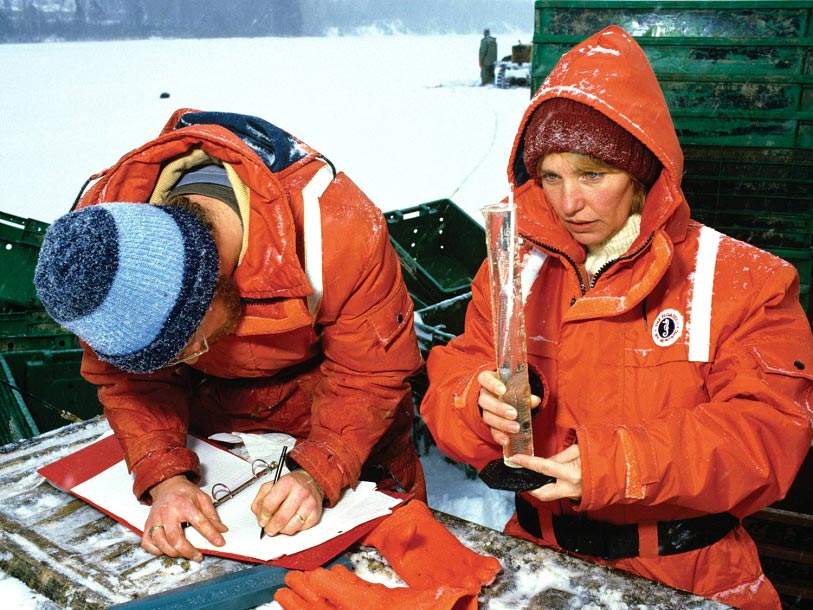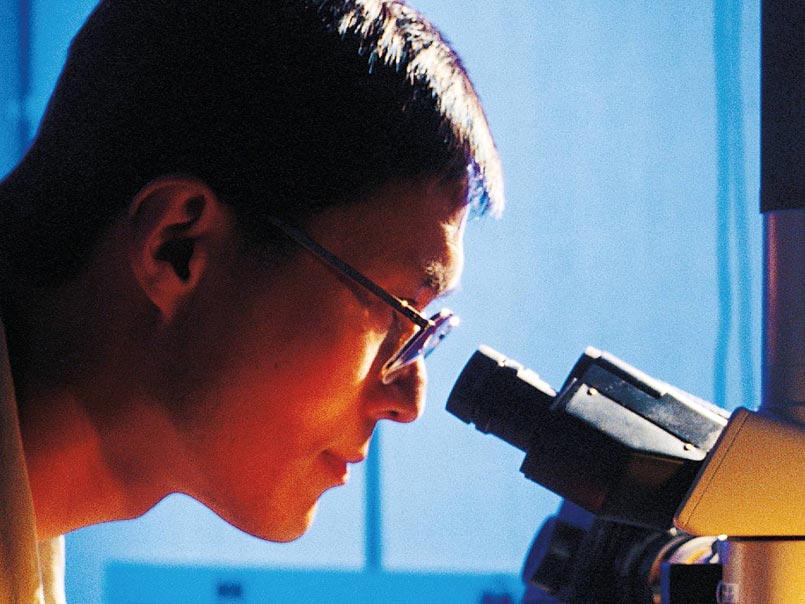|
|
||||||||||
|
|
|
|
|
|
||||||
|
|
||||||||||

Science Information By:
Aquatic Animal Health



Canada’s reputation for high quality fish and seafood depends on keeping our wild and farmed aquatic animals protected against serious infectious diseases.
National attention to aquatic animal health has grown quickly over the last decade due to an increase in volume and diversity of live and fresh seafood trade around the world. Live fish can now travel as rapidly as people between countries to reach consumer markets as well as for aquaculture production. The World Organization for Animal Health, a veterinary organization responsible for setting standards for land-based and aquatic animal health management programs, has stringent guidelines to reduce the risk of transfer of serious disease with the movement of live aquatic animals or seafood products.
DFO
works closely with the Canadian Food Inspection Agency, Health Canada,
industry, universities, other federal departments and the provinces to
coordinate Canada’s aquatic animal health programs, which span federal and
provincial regulatory responsibilities. Visit the links provided below to
learn more about aquatic animal health.
- What we do: National Aquatic Animal Health Science Branch
- National Aquatic Animal Health Program
- Legislation and Regulations pertaining to aquatic animal health
- Fact Sheet: Aquatic Animal Health – Disease Prevention; and FAQs
- Information Bulletins
- Additional Resources
DFO’s National Aquatic Animal Health Science Branch – What We Do
In spring 2005, the Government of Canada funded the development of a National Aquatic Animal Health Program (NAAHP) to bring Canada into line with increasingly stringent international aquatic animal health management standards. Many of Canada’s trading partners are developing aquatic animal health programs based on the international animal health standards set by the World Organisation of Animal Health (OIE) used to support the World Trade Organisation’s Agreement on the Application of Sanitary and Phytosanitary Measures.
The Canadian Food Inspection Agency (CFIA) and Fisheries and Oceans Canada (DFO) were funded to co-deliver federal components of NAAHP.
CFIA, as the lead agency for the NAAHP, will provide program direction under the authority of the Health of Animals Act, which brings Canada’s aquatic and terrestrial animal health programs under the same legislative umbrella. The transfer of regulatory authority from DFO to CFIA, which requires modifications to the Health of Animals Regulations, is anticipated to take two years. In addition to program leadership, CFIA is also responsible for aquaculture health surveillance. DFO is responsible for delivering the science component of NAAHP.
A new regulatory laboratory system is being built from DFO’s existing aquatic animal health laboratory infrastructure for delivery of regulatory diagnostics, technology development and targeted research. DFO is also responsible for surveillance of wild aquatic resources, under CFIA program development.
Successful animal health programs around the world are underpinned by internationally credible national laboratory systems which deliver accurate, reliable and consistent test results for disease detection. This capability, strengthened by technology development and targeted research, provides a country with a sound scientific foundation to protect its animal populations from the introduction of disease, to design integral domestic disease management programs and to defend the certification of exported animals/products. Science and technology are integral to Canada’s performance in validating diagnostic detection methods for significant animal diseases and for improving management of its animal stocks.
The federal regulatory component of NAAHP consists of four main program elements:
- Program direction and regulation
- Field operations, including sample collections
- Diagnostic testing
- Research and development
The CFIA is responsible for most related field operations activities in the aquaculture sector. National Aquatic Animal Health Science program officials perform and coordinate sampling for disease surveillance and monitoring of wild stocks, while directing and delivering diagnostic testing, associated technology development and targeted research to establish a sound science-base supporting the CFIA NAAHP mandate.
The establishment of a credible DFO NAAHP research and laboratory system requires a national management model which is integrated with CFIA responsibilities, incorporates all stakeholders and effectively manages work within a sound performance management framework. In DFO, delivery of the NAAHP is led in collaboration with regional staff. Linkages with the CFIA, federal agencies, provinces/territories, private sector, industry, academia, and public sectors are formalized at national and local levels.
-
Fish Health Protection Regulations - MANUAL OF COMPLIANCE
Text Version | PDF Version | MS Word Version -
National Code on Introductions and Transfers of Aquatic Organisms
-
Viral Haemorrhagic Septicaemia (VHS) in Various Great Lakes Fish Species
-
United States Department of Agriculture: Animal and Plant Health Inspection Service Fact Sheet on VHS (July 2006)
-
Canadian Food Inspection Agency – Aquatic Animal Health Division
-
-
World Organisation of Animal Health (OIE)
-
World Trade Organisation Agreement on Application of Sanitary and Phytosanitary Measures
-
Synopsis of Infectious Diseases and Parasites of Commercially Exploited Shellfish
- Fish Health Protection Regulations - MANUAL OF COMPLIANCE -
Text Version | PDF Version | MS Word Version
-
Department of Fisheries and
Oceans Statement on Sea Lice and Pacific Salmon Stocks
-
SSO Disease of
American (Eastern) Oysters
-
MSX Disease of
American (Eastern) Oysters
-
Importation of Ornamental Fish
- National Code on Introductions and Transfers of Aquatic Organisms